#case 4 spoilers
Text
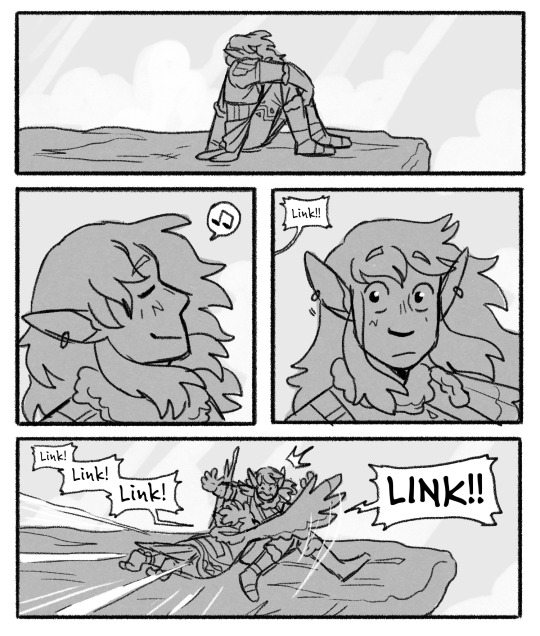


birds of a feather
#totk#loz#link#tulin#totk spoilers#my comics#my art#it is almost 8 in the goddamn morning and my hand is cramping SO bad but if i didnt make this i was going to die#anyways link's signs: page 2 panel 1 he's signing “danger” and page 2 panel 4 he's signing “important/significant”#also idr where i got the “hair braiding is significant to the rito” probably from the reva/ink i used to read back in the day#(censored so it doesnt show up in the tags just in case lol)#theyre everything to me. if you couldn't tell#they have a brother dynamic 2 me but its open to interpretation#idk wtf happened tonight. two long comics from me back to back is absurd#broke this one up also so its more viewable too#sparks art
38K notes
·
View notes
Text
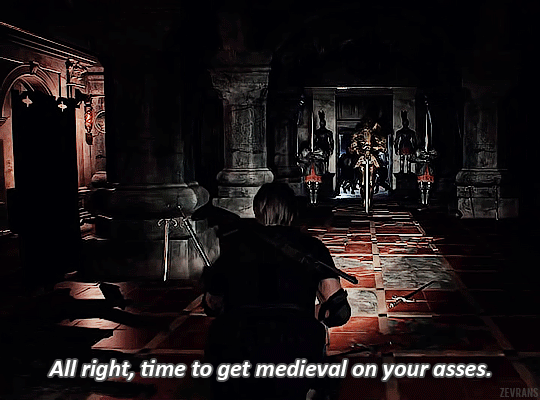
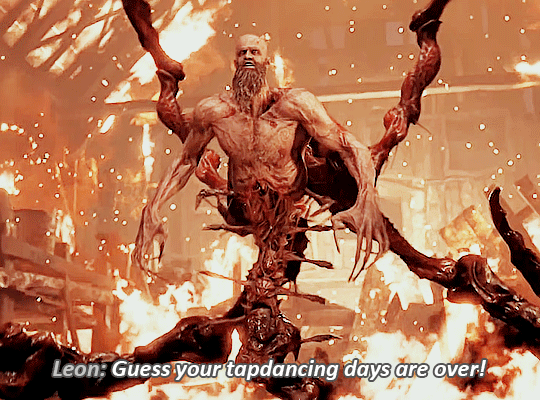
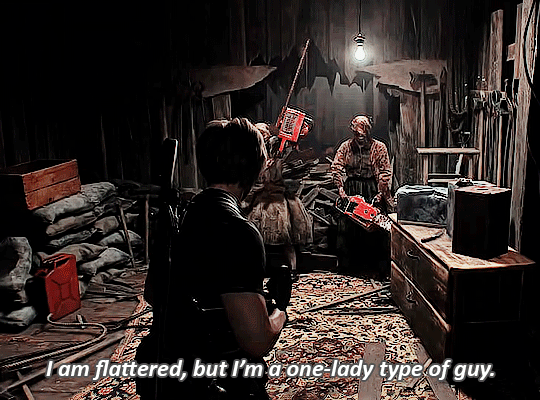
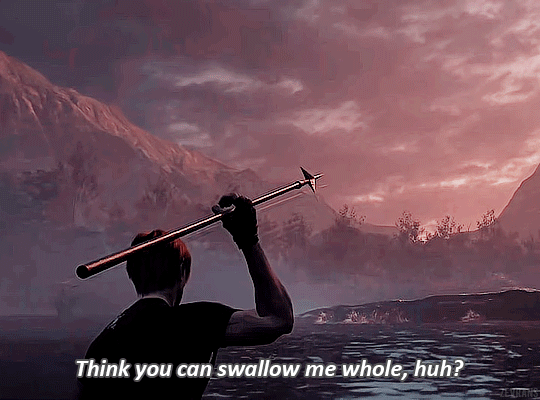
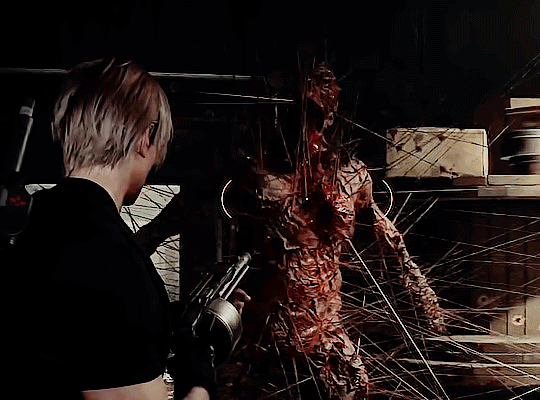
RESIDENT EVIL 4 REMAKE (2023) + some of Leon's many comments
#resident evil#resident evil 4#leon kennedy#resident evil 4 remake#gamingedit#residentevilnet#reedit#reviledit#gamingnetwork#dailygaming#re4r spoilers#leon s kennedy#mine: gifs#gifs by me#mine#he truly has no filterbfkfkssk also not tagging anyone just in case spoilers!#lmk when i can start taggging u guys! <3#userwolfkissed
11K notes
·
View notes
Text

i loeve you dai gyakuten saiban
#ace attorney#the great ace attorney#dai gyakuten saiban#dgs#tgaa#this is my valentines day post <3 i love you little game#the dancing men do spell something out but i won’t tell what#dgs 2 spoilers#tgaa 2 spoilers#just to b clear the hand reaching for stronghart is the professor#hopefully thats clear though lmao#well. the person who was in the professor’s grave anyhow#i tried to match these to the cases but i had to take liberties with some lol#like gina having Toby#and the legendary pair segment technically happens is 2-5 but they’re introduced in 2-4 so
1K notes
·
View notes
Text
Edge – The Future of Interactive Entertainment magazine, issue #401 (October 2024 issue) – Dragon Age: The Veilguard story
The rest of this post is under a cut for length.
Update: this issue of this magazine is now available to buy from UK retailers today. it can be purchased online at [this link]. [Tweet from Edge Online] also, Kala found that a digital version of the magazine can be read at [this link].
This post is a word-for-word transcription of the full article on DA:TV in this issue of this magazine. DA:TV is the cover story of this issue. When transcribing, I tried to preserve as much of the formatting from the magazine as possible. Edge talked to BioWare devs for the creation of this article, so the article contains new quotes from the devs. the article is written by Jeremy Peel. There were no new screenshots or images from the game in the article. I also think that it contains a few lil bits of information that are new, like the bits on companions' availability and stumbling across the companions out and about on their own in the world e.g. finding Neve investigating an abduction case in Docktown.
tysm to @simpforsolas and their friend for kindly telling me about the article!!
-----
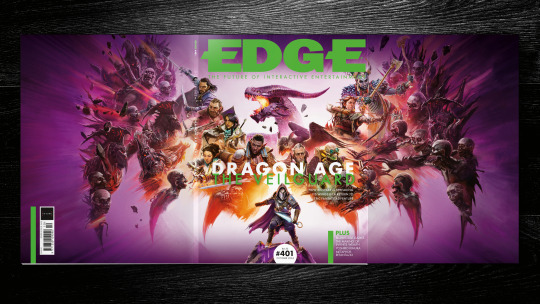
[image source]
Article introduction segment:
"[anecdote about Edge] We were reminded of this minuscule episode in Edge's history during the creation of this issue's cover story, in which we discuss the inspiration behind Dragon Age: The Veilguard with its creators at BioWare. Notably, director John Epler remembers the studio experimenting with a number of approaches during the early phase of development before eventually locking in to what the game was supposed to be all along, above all else: 'a single-player, story-focused RPG'. As you'd expect from BioWare, though, that was really just a starting point, as we discovered on p54."
BioWare draws back the Veil and ushers us into a new Dragon Age
"BEHIND THE CURTAIN BioWare's first true RPG in age age is as streamlined and pacey as a dragon in flight. By Jeremy Peel Game Dragon Age: The Veilguard Developer BioWare Publisher EA Format PC, PS5, Xbox Series Origin Canada Release Autumn
The Dragon Age universe wasn't born from a big bang or the palm of an ancient god. Instead, it was created to solve a problem. BioWare was tired of battling Hasbro during the making of Baldur's Gate and Neverwinter Nights, and wanted a Dungeons & Dragons-like setting of its own. A small team was instructed to invent a new fantasy world in which the studio could continue its groundbreaking work in the field of western RPGs, free of constraints.
Well, almost free. BioWare's leaders mandated that the makers of this new world stick to Eurocentric fantasy, and include a fireball spell - since studio co-founder Ray Muzyka had a weakness for offensive magic.
Beyond that, BioWare’s storytellers were empowered to infuse Dragon Age with their own voices and influences, leaning away from D&D’s alignment chart and towards a moral grayness that left fans of A Song Of Ice And Fire feeling warm and cozy.
In the two decades since, the world of Thedas – rather infamously and amusingly, a shortening of ‘the Dragon Age setting’ that stuck – has taken on a distinct flavor. It’s something director John Epler believes is rooted in characters.
“There’s definitely some standard fantasy stuff in Dragon Age, but everything in the world, every force, is because of someone,” he says. “The idea is that every group and faction needs to be represented by a person – someone you can relate to. Big political forces are fine as background, but they don’t provide you with those interesting story moments.”
Dragon Age: The Veilguard bears out that philosophy. The long-awaited sequel was first announced with the subtitle Dreadwolf, in reference to its antagonist, Solas – an ancient elf who once stripped his people of immortality as punishment for betraying one of their own. In doing so, Solas created the Veil, the thin barrier through which wizards pull spirits and demons invade the waking world. In other words, many of Dragon Age’s defining features, from its downtrodden elves to the uneasy relationship between mages and a fearful church, can be traced right back to one character’s decision.
“The world exists as it does because of Solas,” Epler says. “He shaped the world because of the kind of character he was. That’s, to me, what makes Dragon Age so interesting. Everything can tie back to a person who to some degree thought they were doing the right thing.”
Perhaps BioWare’s greatest achievement in slowburn character development, Solas is a former companion, an unexploded bomb who sat in the starting party of Dragon Age: Inquisition, introverted and useful enough to get by without suspicion. Yet by the time credits rolled around on the Trespasser DLC, players were left in no doubt as to the threat he presented.
Determined to reverse the damage he once caused, the Dreadwolf intends to pull down the Veil, destroying Thedas as we know it in the process. The next Dragon Age game was always intended to be his story.
“We set that up at the end of Trespasser,” Epler says. “There was no world where we were ever going to say, ‘And now let’s go to something completely different.’ We wanted to pay off that promise.”
Yet almost everything else about the fourth Dragon Age appears to have been in flux at one time. In 2019, reporter Jason Schreier revealed that an early version, starring a group of spies pulling off heists in the Tevinter Imperium, had been cancelled two years prior. Most of its staff were apparently moved onto BioWare’s struggling Anthem, while a tiny team rebooted Dragon Age from scratch. That new game was said to experiment with live-service components.
“We tried a bunch of different ideas early on,” Epler says. “But the form The Veilguard has taken is, in a lot of ways, the form that we were always pushing towards. We were just trying different ways to get there. There was that moment where we really settled on, ‘This is a singleplayer, story-focused RPG – and that’s all it needs to be’”.
Epler imagines a block of marble, from which BioWare was attempting to carve an elephant – a character- and story-driven game. “We were chipping away, and sometimes it looked more like an elephant and sometimes it didn’t”, he says. “And then we eventually realized: ‘Just make an elephant’. When we got to that, it almost just took shape by itself.”
2014’s Dragon Age: Inquisition was an open-world game commonly criticized for a slow-paced starting area which distracted players from the thrust of the plot. The Veilguard, in contrast, is mission-based, constructed with tighter, bespoke environments designed around its main story and cast. “We wanted to build a crafted, curated experience for the player,” Epler says. “Pacing is important to us, and making sure that the story stays front and center.”
Epler is very proud of Inquisition, the game on which he graduated from cinematic designer to a lead role (for its DLC). “But one of the things that we ran into on that project was an absentee antagonist,” he says. “Corypheus showed up and then disappeared. You spent ten hours in the Hinterland doing sidequests, and there wasn’t that sense of urgency.”
This time, The Veilguard team wants you to constantly feel the sword of Damocles dangling above your head as you play – a sense that the end of the world is coming if you don’t act. “There’s still exploration – there’s still the ability to go into some of these larger spaces and go off the beaten path to do sidequests,” Epler says. “But there’s always something in the story propelling you and the action forward, and allowing you to make decisions with these characters where the stakes feel a lot more immediate and present. And also, honestly, more real.”
No sooner have you finished character creation than Dragon Age: The Veilguard thrusts you into a choice. As your protagonist, Rook, steps into focus on the doorstep of the seediest bar in town, you decide whether to threaten the owner for information or make a deal. Brawl or no, you’ll walk out minutes later with a lead: the location of a private investigator named Neve Gallus, who can help you track down Solas.
You proceed into Minrathous, the largest city in Thedas and capital of the Tevinter Imperium – a region only alluded to in other Dragon Age games. It’s a place built on the backs of slaves and great mages, resulting in tiered palaces and floating spires – a kind of architecture unimaginable to those in the southern nations.
“When your Dragon Age: Inquisition companion Dorian joins you in Orlais, in one of the biggest cities in Thedas, he mentions that it’s quaint and cute compared to Minrathous,” Corinne Busche, game director on The Veilguard, says. “That one bit of dialogue was our guiding principle on how to realize this city. It is sprawling. It is lived-in. Sometimes it’s grimy, sometimes it’s bougie. But it is expansive.”
Immediately, you can see the impact of BioWare’s decision to tighten its focus. Around every other corner in Minrathous is an exquisitely framed view, a level of spectacle you would never see in Inquisition, where resources were spread much more thinly. “When you know that you’re gonna be heading down a canyon or into this plaza where the buildings open up, you have those perfect spots to put a nice big temple of Andraste or a mage tower,” art director Matthew Rhodes says. “You get those opportunities to really hit that hard.”
BioWare’s intention is to make strong visual statements that deliver on decades of worldbuilding. “People who have a history with Dragon Age have thought about what Minrathous might be like,” Rhodes says. “We can never compete with their imagination, but we can aim for it like we’re shooting for the Moon.”
The people of Tevinter use magic as it if were electricity, as evidenced by the glowing sigils that adorn the dark buildings – street signs evoking Osaka’s riverfront or the LA of Blade Runner. They’re just one of the tricks BioWare’s art team uses to invite you to stop and take in the scene. “A lot of what you start to notice when you’re the artist who’s been working on these big, beautiful vistas and neat murals on the walls is how few players look up,” Rhodes says. “We design props and architecture that help lead the eyes.”
For the really dedicated shoegazers, BioWare has invested in ray-traced reflections, so that the neon signage can be appreciated in the puddles. There are also metal grates through which you can see the storm drains below. “The idea behind that is purely just to remind the player often of how stacked the city is,” Rhodes says. “Wherever you’re standing, there’s guaranteed to be more below you and above you.”
One of BioWare’s core creative principles for The Veilguard is to create a world that’s actually worth saving – somewhere you can imagine wanting to stick around in, once the crises of the main quest are over. To that end, the team has looked to ground its outlandish environments with elements of mundanity.
“A guy’s normal everyday life walking down the streets of this city is more spectacular than what the queen of Orlais is seeing, at least in terms of sheer scale," Rhodes says. “One of the things we’ve tried to strike a balance with is that this is actually still a place where people have to go to the market and buy bread, raise their kids, and try to make it. It’s a grand and magical city, but how do you get your horses from one place to the next? Where do you load the barrels for the tavern? It’s really fun to think of those things simultaneously.”
Normal life in Minrathous is not yours to behold for long, however. Within a couple of minutes of your arrival, the very air is ripped open like cheap drapes, and flaming demons clatter through the merchant carts that line the city streets. A terrible magical ritual, through which Solas intends to stitch together a new reality, has begun.
“We wanted the prologue to feel like the finale of any other game we’ve done,” Busche explains. “Where it puts you right into this media-res attack on a city and gets you really invested in the action and the story right away. When I think back to Inquisition, how the sky was literally tearing open – the impact of this ritual really makes that look like a minor inconvenience.”
Our hero is confronted by a Pride demon, imposing and armored as in previous games, yet accented by exposed, bright lines that seem to burst from its ribcage. “They are a creature of raw negative emotion,” Busche says. “So we wanted to actually incorporate that into their visual design with this glowing nervous system.”
When a pack of smaller demons blocks Rook’s route to the plaza where Neve was last seen, battle breaks out, and The Veilguard’s greatest divergence from previous Dragon Age games becomes apparent. Our rogue protagonist flits between targets up close and evades individual sword swings with precision. In the chaos, he swaps back and forth between blades and a bow. He blends light and heavy attacks, and takes advantage of any gap in the melee to charge up even bigger blows.
“Responsiveness was our first-and-foremost goal with this baseline layer of the combat system,” Busche says. Unless you’re activating a high-risk, high-reward ability such as a charged attack, any action can be animation-cancelled, allowing you to abort a sword swing and dive away if an enemy lunges too close. “We very much wanted you to feel like you exist in this space, as you’re going through these really crafted, hand-touched worlds,” Busche says. “That you’re on the ground in control of every action, every block, every dodge.” Anyone who’s ever bounced off a Soulslike needn’t worry: The Veilguard’s highly customizable difficulty settings enable you to loosen up parry windows if they prove too demanding.
Gone is the overhead tactical camera which, for some players, was a crucial point of connection between Dragon Age and the Baldur’s Gate games that came before, tapping into a lineage of thoughtful, tabletop-inspired combat. Epler points out that the camera’s prior inclusion had an enormous impact on where the game’s battles took place. “We actually had a mandate on Inquisition, which was, ‘Don’t fight inside,’” he says. “The amount of extra work on getting that tactical camera to work in a lot of those internal environments, it was very challenging.”
Gone, too, is the ability to steer your comrades directly. “On the experiential side, we wanted you to feel like you are Rook – you’re in this world, you’re really focused on your actions,” Busche says. “We very much wanted the companions to feel like they, as fully realized characters, are in control of their own actions. They make their own decisions. You, as the leader of this crew, can influence and direct and command them, but they are their own people.”
It's an idea with merit, albeit one that could be read as spin. “It’s not lost on me,” Busche says. “I will admit that, on paper, if you just read that you have no ability to control your companions, it might feel like something was taken away. But in our testing and validating with players, what we find is they’re more engaged than ever.”
There may be a couple of reasons for that. One is that Dragon Age’s newly dynamic action leaves little room for seconds spent swapping between perspectives. “This is a much higher actions-per-minute game,” Busche says. “It is more technically demanding on the player. So when we tried allowing you full control of your companions as well, what we’ve found is it wasn’t actually adding to the experience. In fact, in some ways it was detrimental, given the demanding nature of just controlling your own character.”
Then there’s The Veilguard’s own tactical layer, as described by BioWare. Though the fighting might be faster and lower, like a mana-fuelled sports scar, the studio is keen to stress that the pause button remains as important to the action as ever. This is, according to Busche, where the RPG depth shines through, as you evaluate the targets you’re facing and take their buffs into account: “Matching elemental types against weaknesses and resistances is a big key to success in this game.”
You pick between rogue, warrior and mage – each role later splitting again into deeper specialisms – and draw from a class-specific resource during fights. A rogue relies on Momentum, which is built up by avoiding damage and being highly aggressive, whereas a warrior is rewarded for blocking, parrying, and mitigating damage.
Those resources are then used on the ability wheel, which pauses the game and allows you to consider your options. The bottom quadrant of the wheel belongs to your character, and is where three primary abilities will be housed. “Rook will also have access to runes, which function as an ability, and a special ultimate ability,” Busche says. “So you’re bringing five distinct abilities with you into combat.”
The sections to the left and right of the wheel, meanwhile, are dedicated to your companions. Busche points to Lace Harding, the returning rogue from Inquisition, who is currently frozen mid-jump. “She is her own realized individual in this game. She’s got her own behaviors: how she prioritizes targets, whether she gets up close and draws aggro or stays farther back at range. But you’ll be able to direct her in combat by activating her abilities from the wheel.”
These abilities are complemented by positional options at the top of the wheel, where you can instruct your companions to focus their efforts on specific targets, either together or individually. Doing so will activate the various buffs, debuffs and damage enhancements inherent in their weapons and gear. “So,” Busche explains, “as you progress through the first two hours of the game, this full ability wheel is completely populated with a variety of options and different tactics that you can then string together.”
BioWare has leaned into combos. You might tell one companion to unleash a gravity-well effect that gathers enemies together, then have another slow time. Finally, you could drop an AOE attack on your clustered and slowed opponents, dealing maximum damage. The interface will let you know when an opportunity to blend two companion abilities emerges – moments BioWare has dubbed ‘combo detonations’.
“I like to think about this strategic layer to combat as a huddle,” Busche says, “where you’re figuring out how you want to handle the situation, based on the information you have on the encounter, and how you and your companions synergize together.”
Deeper into the game, as encounters get more challenging, Epler says we’ll be spending a lot of time making “very specific and very focused tactical decisions”. The proof will be in eating the Fereldan fluffy mackerel pudding, of course, but Busche insists this shift to fast action isn’t a simplification. “What really makes the combat system and indeed the extension into the progression system work is that pause-and-play tactical element that we know our players expect.”
The autonomy of The Veilguard’s companions doesn’t end with combat. BioWare’s data shows that in previous games players tended to stick with the same two or three beloved comrades during a playthrough. This time, however, you’ll be forced to mix your squad up at regular intervals.
“We do expect that players will have favorites they typically want to adventure with,” Busche says, “but sometimes certain companions will be mandatory.” Others may not always be available – part of the studio’s effort to convince with three-dimensional characters. “They do have a life outside of Rook, the main character,” Busche says.
"They'll fall in love with people in this world. They’ve had past experiences they’ll share with you if you allow them in and get close to them.”
Being separated from your companions, rather than collecting them all in a kind of stasis at camp, allows you to stumble across them unexpectedly. Busche describes an instance in which, while exploring the Docktown section of Minrathous, you might bump into Neve as she investigates an abduction case. “If I go and interact with her, I can actually stop what I’m doing, pick up her arc and adventure with her throughout her part of the story,” Busche says. “What’s interesting is that all of the companion arcs do ultimately tie back to the themes of the main critical path, but they also have their own unique challenges and villains, and take place over the course of many different intimate moments.”
Some parts of a companion’s quest arc involve combat, while others don’t. Some are made up of large and meaningful missions – as lavish and involved as those along the critical path. “While they are optional, I would be hesitant to call them side content in this game,” Busche says. If you choose not to engage with some of these companion-centered events, they’ll resolve on their own. “And it might have interesting implications.”
The Veilguard promises plenty of change, then, even as it picks up the threads of fan-favorite characters and deepens them, honoring the decades of worldbuilding that came before it. This is perhaps the enduring and alluring paradox of Dragon Age: a beloved series which has never had a direct and immediate sequel, nor a recurring protagonist. Instead, it’s been reinvented with each new entry.
“It’s a mixed blessing to some degree,” Epler says. “The upside is always that it gives us more room to experiment and to try new things. There are parts of the series that are common to every game: it’s always an RPG, it’s always about characters, and we always want to have that strategic tactical combat where you’re forced to make challenging decisions. But at the end of the day, I think what makes Dragon Age Dragon Age is that each one feels a little bit different.”"
Q&A Matthew Rhodes Art director
Q. Early BioWare RPGs were literary, with the emotions and detail mostly happening in dialogue boxes. How have you seen the studio's approach to visual storytelling evolve? A. This has been my entire career. When I first showed up at BioWare, it was at the tail end of Jade Empire, and then I was working on Dragon Age: Origins and early Mass Effect. The games had taken that next step out of sprites and 2D models, and it was like: 'How do we say more? How do we communicate more clearly?' During those early days, a lot of games depended on words to fix everything for you. As long as your character was talking bombastically, you could lend them everything that they needed. But as time went on it also became a visual medium, and it's been this long journey of trying to establish art's seat at the table. I've worked with some great writers over the years, and art is also an essential part of the storytelling. From Dragon Age: Inquisition on, I've been trying to stress with my teams that we are a story department.
Q. Is part of that also letting writers know that your storytelling assistance is available, to help them show rather than tell? A. On The Veilguard, that principle has been operating the best I've seen it. Where you would need a paragraph of dialogue in one of those exposition moments where a character just talks to you, we could sell that with a broken statue or a skeleton overgrown with vines. We've had more opportunities to do that on The Veilguard than most of the projects I've ever worked on combined.
To a hammer, every problem looks like a nail, and so in every department, writing will try to solve it with more words, and art will try to solve it with more art. I've bumped up against moments where it's like, 'As much as we could keep hammering on this design, I think this is actually an audio solution.' And then you take it to audio, and you don't get that overcooked feeling where each team is just trying to solve it in their silo. It's a really creatively charged kind of environment.
[main body of article ends here]
Additional from throughout the article --
Image caption: “Spotlights shine down from the city guards’ base as they pursue you through the streets of Minrathous.”
Image caption: “While most of your companions can be sorted into comfortingly familiar RPG classes, The Veilguard introduces two new varieties: a Veil Jumper and a private investigator.”"
Image caption [on this Solas ritual concept art specifically]: “The name previously given to the game – Dreadwolf – was a direct reference to Solas. Your former companion, now on his own destructive mission, still features, despite the name change.”
Text in a side box:
"RATIONAL ANTHEM The hard lesson BioWare drew from Anthem was to play to its strengths. “We’re a studio that has always been built around digging deep on storytelling and roleplaying,” Epler says. “I’m proud of a lot of things on Anthem – I was on that project for a year and a half. But at the end of the day we were building a game focused on something we were not necessarily as proficient at. For me and for the team, the biggest lesson was to know what you’re good at and then double down on it. Don’t spread yourselves too thin. Don’t try to do a bunch of different things you don’t have the expertise to do. A lot of the people on this team came here to build a story-focused, singleplayer RPG."
Image caption: “In combat you no longer control your companions directly – this is a faster-paced form of fighting – but you are able to direct them in combat, and can even blend their abilities in ‘combo detonations’.”
Image caption: “You’ll be exploring new regions across Tevinter and beyond – Rivain is a certainty, and that’s only accessible via Antiva travelling overland.”
Image caption: “There are three specializations per character class; on the way to unlocking them you’ll acquire a range of abilities.”
Text in a side box:
"MEET YOUR MAKER “Full disclosure: Dragon Age has traditionally not done skin tones well, especially for people of color,” Busche says. “We wanted to do a make-good here.” In The Veilguard’s character creator, you can adjust the amount of melanin that comes through in the skin, as well as test various lighting scenarios to ensure your protagonist looks exactly as you intend in cutscenes. “Speaking of our first creative principle – be who you want to be – we really feel these are the kinds of features that unlock that for our players,” Busche says. “We want everyone to be able to see themselves in this game.” For the first time in the series, your body type is fully customizable too, with animations, armor and even romantic scenes reflecting your choices."
Image caption: “Your companions are a mix of old and new – Lace Harding is a familiar face. Veil Jumper Bellara is new, with a new occupation, while Davrin is a new face with a familiar profession – he’s a Warden.”
Image caption: "Arlathan Forest is home to the ruined city of the elves, now a place of wild magic, Veil Jumpers and (allegedly) spirits".
Image caption: "Bellara is driven by a desire to learn more about the elves, rediscovering the shattered history and magic of her people."
[source: Edge – The Future of Interactive Entertainment magazine, issue #401 (October 2024 issue) - it can be purchased online at [this link].]
#dragon age: the veilguard#dragon age the veilguard spoilers#dragon age: dreadwolf#dragon age 4#the dread wolf rises#da4#dragon age#bioware#solas#video games#longpost#long post#simpforsolas#anthem#jade empire#mass effect#obsessed with the idea of helping neve solve cases...
414 notes
·
View notes
Text

who cares?
#isat#in stars and time#siffrin#isat siffrin#isat fanart#paper craft#spoilers#JUST IN CASE TEE HEE ?#you can tell i am fixating on isat. u can smell it. anyways i have like 4 other wips-#I'M DRAWING TO COPE W THE FACT I'M TOO NERVOUS TO FINISH MY FICS HEHE.
857 notes
·
View notes
Text

Manfred better have opinions on the romance Bioware.
#dragon age 4#dragon age the veilguard#dragon age veilguard#Datv#da manfred#manfred dragon age#dragon age rook#emmrich volkarin#dragon age spoilers#< just in case
377 notes
·
View notes
Text
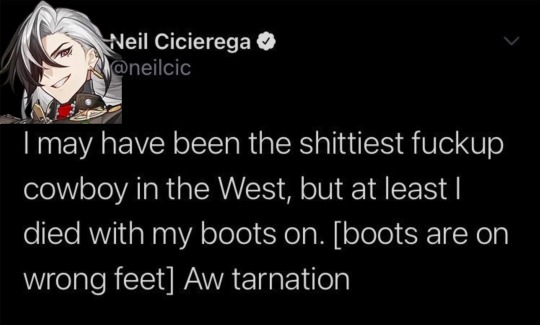


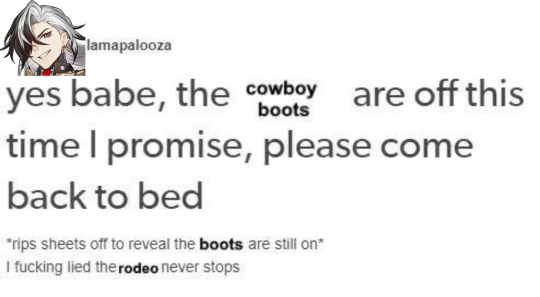
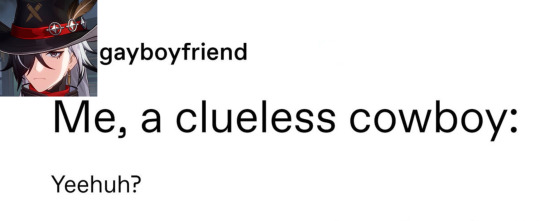


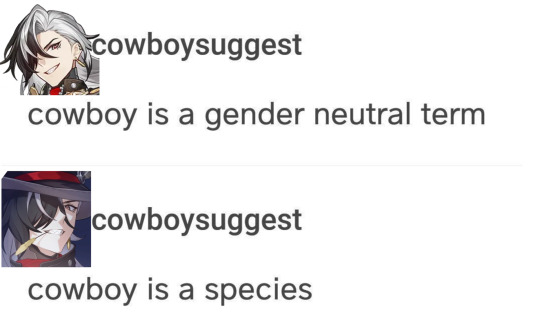
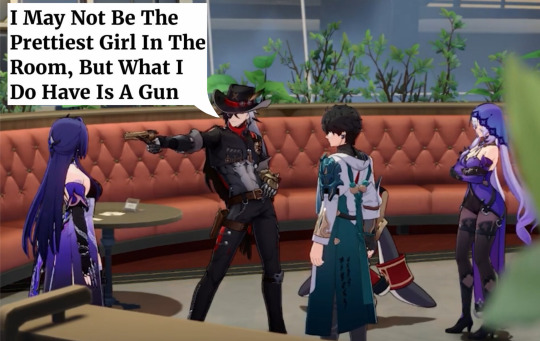
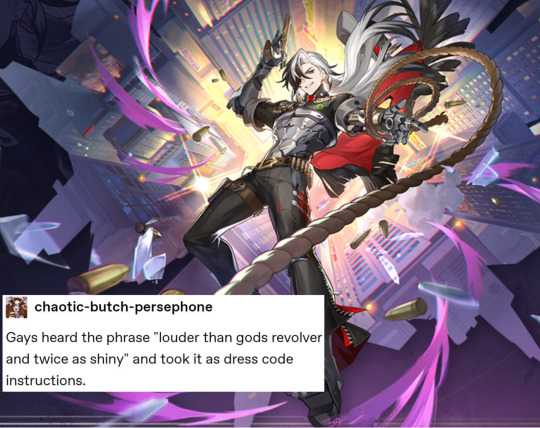
Making Incorrect H:SR Quotes Until I Run Out of (hopefully) Original Ideas - Pt. 4 - Nuthin' but Boothill Edition
[Pt. 1] [Pt. 2] [Pt. 3] [Pt. 5] [Pt. 6]
#boothill#honkai star rail#hsr#hsr incorrect quotes#hsr memes#honkai star rail memes#hsr meme#honkai star rail meme#hsr textpost#hsr boothill#boothill hsr#hsr spoilers#hsr 2.2 spoilers#hmmm... don't think it's worth tagging the others in the 9th image. this ain't about them#still unsure abt how to do the alt text for these kinda posts properly but hopefully i'm improving#anyways. don't think i've ever seen heard and typed "cowboy' so many times in one day as i have while making this good lord#i did a bit of digging around and haven't Seen any of these done yet so. here's hoping that's the case!#i'm only ~3/4 of the way through the 2.2 main quest but the need to make these compelled me to put these out Now#i can already tell u that there Will be more of these for Boothill tho bc i'm crazy abt him. probably enough to make another dedicated post#but i'm gonna wait until i'm fully caught up on the plot (and will probably spoil myself for more of his character lore after that as well)#speaking of. i'm gonna go eat mac n' cheese and stay up too late playing through the rest of the main quest#i'm loving it so far. many thoughts head full abt it all but in a good way. hoping for more Boothill moments as we approach the end#he's def not the main character here but he is to Me okay. he is to me. i'm scarfing down every crumb he drops#i'm also suffering from Aventurine withdrawals out here. Argenti mentioning him was Interesting but i need More. Where Is He.#also. was Argenti intentionally not voiced or was it a game issue?? the hell was that. threw me off so hard when i couldn't hear him speak#anyways i'm getting off topic and wasting precious gaming time so i'll be takin' my leave now
567 notes
·
View notes
Text
Rewatching Risk and thinking about how genuinely freaked out Félix gets when he sees Emilie in the basement. That’s not just his aunt but someone who looks exactly like his mom. He bolts the second he sees her and it honestly looks like he’s going to make a run for it out of the house before Nathalie and Gabriel find him. You can see him floundering a bit to act like Adrien again before he regains his composure. I just. AAA. I love this episode. It’s the definition of ‘Fucked around and found out’. Félix was prepared for a lot but NOT finding the basement.
#miraculous ladybug#Félix @ himself when Gabriel and Nathalie walk in: You are NOT having a panic attack in front of HIM of all people. Get it together#how does he even begin to explain any of that to his mom#he tells her everything but how do you start the conversation.#poor guy has seen The Horrors in a way that he can’t even talk to a therapist about#felix fathom#felix graham de vanily#ml risk#ml season 4 spoilers#just in case?#SB Speaks
350 notes
·
View notes
Photo

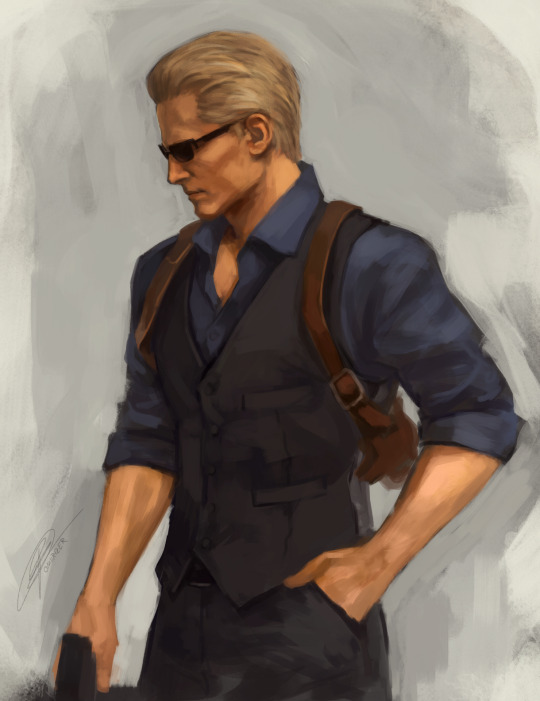
#resident evil#albert wesker#resident evil 4 remake#RE Engine Wesker is finally here#ive been waiting for 84 years#resident evil 4 spoilers#just in case#arttag#fanart
4K notes
·
View notes
Text
so five and lila being a thing is going right next to allison literally sexually assaulting luther in the box of things we are absolutely under no circumstances accepting as part of canon right
#tw sa mention#cw sa mention#would love if when yall reblog this you could tag with tw or cw sa mention to keep things safe!!#i actually enjoyed s4 and thought the ending was perfect to be so real#s3 really lowered my expectations lmao#tua#tua season 4#tua spoilers#the umbrella academy#s4 was fun they flubbed so many storylines but it was fun and emotional and klaus got a ton of comic book moments and there was bonding#it was fun ok#honestly in my head s3 wasn’t even canon like the timeline split#sometimes s2 isn’t even canon to me but it’s so fucking fun#it’s all fun and fucking sad and goddammit i liked it more than s3 maybe because there was less incest the bar is really low huh#unless u subscribe to the technically all the kids r biologically related thing (i do) in which case lila/diego & lila/five are also incest#but for this show ‘we may kind of be biologically related bc of magic but we don’t have the same last name & dad & childhood home’ is a win#anyway i love klaus always everyday i love them they’re everything to me#i honestly just really let myself enjoy this season bc it’s the last one and i’ve been through hell#klaus hargreeves#five hargreeves#allison hargreeves#lila pitts#luther hargreeves#reginald hargreeves#diego hargreeves#yeet my deet
232 notes
·
View notes
Text
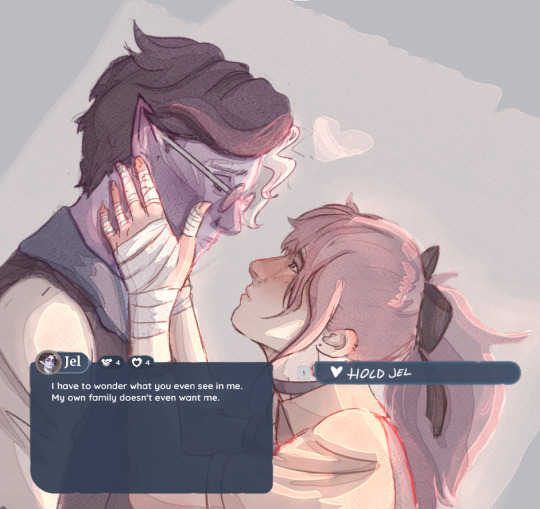
Well, the game didn't give me the option, so I had to do it myself 😤
#little doodle cause this didnt leave me be TT#Palia#palia mmo#jel#jel omiata#lila doodles#palia spoilers#- JUST in case cause it's dialogue from romance lvl 4!
364 notes
·
View notes
Text

more siffrin doodles in a style that’s closer to what i usually draw in. all redraws bc i’m still trying to get a feel for how i wanna draw them.



original versions of the one i redrew
#my art#in stars and time#siffrin#isat spoilers#<- just in case#made it to act 4 and i’m soooo so so normal
192 notes
·
View notes
Photo


just luis being sl*tty
#gamingedit#reviledit#residenteviledit#reedit#re4redit#luis sera#resident evil 4 remake#resident evil games#vg#mygifs#usermichi#videogamemen#dailygaming#gamingnetwork#re4r spoilers#just in case tumblr freak out
2K notes
·
View notes
Text


they r qpps to me
#my art#the power of two#tpot#tpot 9#bfb#bfdi#osc#tpot gaty#tpot two#two x gaty#gaty x two#twogaty#gatytwo#<- literally i do not know their shipname at all but anyways i am soooo normal about them#they are queerplatonic partners to me... twogaty qpr realness...#ill probably post this to twitter later today bc its like 5 am right now#also just in case Two's speech in panels 3 & 4 are sposed to be unintelligble but i mean if you can read it then cool#also urrm idk if this is spoilers but i guess i will tag it as so#tpot 9 spoilers#tpot spoilers
501 notes
·
View notes
Text
Some notes from today's new BioWare Blog post, which contained some new character insights and also gave some information on what is coming next and when:
Creative Performance Director Ashley Barlow helped to cast and direct over a thousand conversations in the game
Lucanis is bloodthirsty, calculated, and a workaholic. He was raised with high expectations and fears disappointing those he loves. To him, being an assassin is his only job and identity to be excellent at. He's constantly attuning himself to the kind of shifting terrain of every mission. There's a lot of love between him and Illario
As Zach is a comedian, he would easily find the humor in anything Lucanis was saying
Neve is a Shadow Dragons rebel who cares deeply about helping people and never leaves work half-done. Epler: " [she is] the working class hero trying to make her hometown better"
Emmrich is sincere, friendly, scholarly, sophisticated, eager to teach and learn, a well-meaning but oblivious academic, with a "hot nerdiness". He assumes everyone has an academic's curiosity so can be pedantic on select topics
The Mourn Watch are revered in Nevarra but odd at best and evil at worst outside of it
Nick: "I love the fact that the writers took Emmerich and explored the whole idea of death and the whole idea of necromancing by bringing kindness into it. I really responded to that and got into that and I know it sounds crazy, but it’s to not have this idea that death is vulgar or something to be terrified about, but something to actually engage with on so many levels. I just love the fact that the writers had the courage to do that in a game like this."
"Often Nick is just playing off of someone making a sound, and he takes it and internalizes it and gives it meaning and care, which is amazing to watch."
The world has changed a lot since DA:I
Harding has been leading teams through the wilderness while covering friends in battle
Harding loves her mom. She loves to write letters home and is always talking about her mother. She likes plants and raising plants. She has grown and is a veteran now, a trusted voice at the table
Footage of the full DA:TV @ SDCC companions panel should be available in a couple of weeks
Next month there will be a new roadmap, more looks at the game, and the reveal of the release date
[emphasis mine]
And this paragraph:
"Dragon Age: The Veilguard sees players embark on a perilous quest to face powerful Elven gods and stop the apocalyptic destruction they’re unleashing. You’ll step into the role of Rook, battling on the front lines alongside a deep and compelling cast of companions who together comprise The Veilguard, a group of heroes who have come together to stop the veil from breaking and bringing about the end of the world. Rook must become the unexpected leader who can rally and unite the group. Throughout the game, you can explore the detailed storylines of each companion, navigating love, loss, and complex choices that influence your relationships."
[source]
#dragon age: the veilguard#dragon age the veilguard spoilers#dragon age: dreadwolf#dragon age 4#the dread wolf rises#da4#dragon age#bioware#video games#dragon age: tevinter nights#long post#longpost#there is other info on the panel in the blogpost (so do read it!!) but this post focused mainly on things we didn't hear or see before like#in clips of the panel that were on social media or on e.g. live tweet threads on the panel#(in case you're wondering why every character snippet and quote isnt in this post ^^)#((next month = august))
460 notes
·
View notes
Text

What the hell is a distinct scorpion sound
#as someone who grew up in Texas I fucking wish they made sound man#those guys are EVERYWHERE and you’ll never even know it until you sit on one#only time I’ve ever ‘heard’ one is when like 4 of them got trapped in a vase and we couldn’t figure out what the scratching sound was#it was infact the scorpions trying to escape the case#VASE#tmagp#tmagp spoilers#mod post#the magnus protocol
168 notes
·
View notes